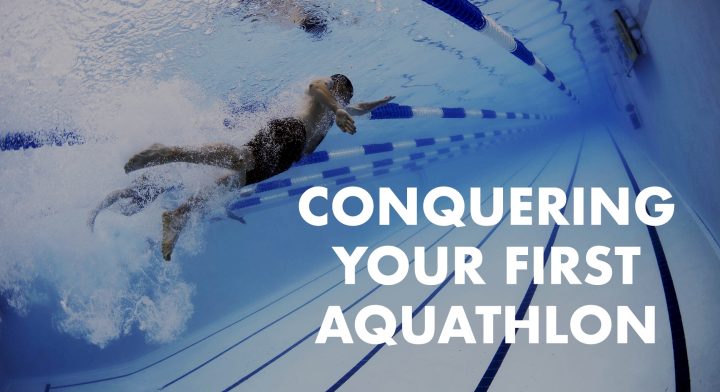
Itching to try out a multisport event but don’t know where to start? An aquathlon might just be the perfect race for you!
Aquathlon involves two disciplines: running and swimming. The race follows a swim-run format. The swim ranges from 400-900 meters while the run is 2.5-5km, depending on the race category.
Here are a few tips on how you can own your first (or nth) aquathlon:
1. Recon the course
If you’ve been training in an indoor and/or 25-meter pool, I recommend checking out the venue at least once before your actual race so that you’ll get a feel of the course. Racecourses are released 1-2 weeks before race day. Trying out the pool will help you get rid of the initial shock of seeing and imagining swimming in a loooong pool as aquathlons are done in a 50-meter pool. Getting a feel of the water and distance will help you adjust your pace during race day.
After getting a feel of the swim, try doing at least one loop around the run course. Having an idea on what direction to go to will eliminate the confusion come race day when the path is littered with transition boxes and spectators.
Tip: The first 300 meters of the run is the most important! Knowing if your first 300 meters will be flat, inclined, or declined will give you that extra push and keep you safe. If it will be a descent, I suggest to go slow as you may find yourself rolling downhill, like me during my first race hehehe.
2. Read. Read. Read
Aside from familiarizing yourself with the race course, read the race briefing info as well. The race brief will contain the time of registration, the time transition area closes, waves, and start times. Organizers will not allow you to swim on a different wave and will result to disqualification.
Tip: Knowing the gun start for your wave will help you time your warm up. Warm up will only keep your body temp and heart rate up for 10-30 mins. After that, all signs of your warm-up are gone. Try to warm up 45 minutes before your gun start.
3. Setting up your transition
Before that, let’s make a run down first on the essentials you will need come race day:
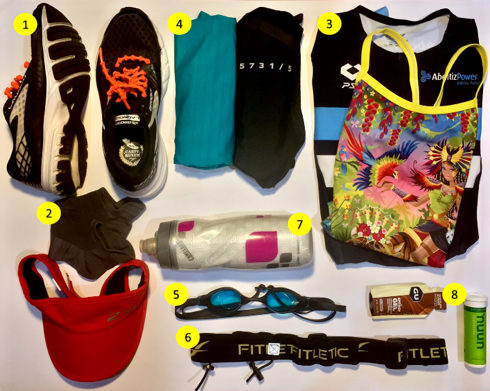
1. Rubber shoes
2. Socks
3. Swimsuit/ Tri Suit
4. T-shirt and Shorts (if you won’t be using a tri-suit)
5. Goggles
6. Race Belt
7. Water Bottle
8. Hydration and energy gels of your choice
*Swim cap will be provided by the race organizer.*
Now we go on to setting up your transition box. I personally prefer sitting down when transitioning as this helps me catch my breath and conveniently put my shoes on. You will be slightly disoriented during the first few minutes coming out of the water. To add to that, you might be scrambling for your race bib, clothes, shoes, etc.
I recommend putting on your gear from feet to head. When arranging your equipment, always place what you’ll wear first at the top and the last at the bottom. Check out how I arrange my gear:
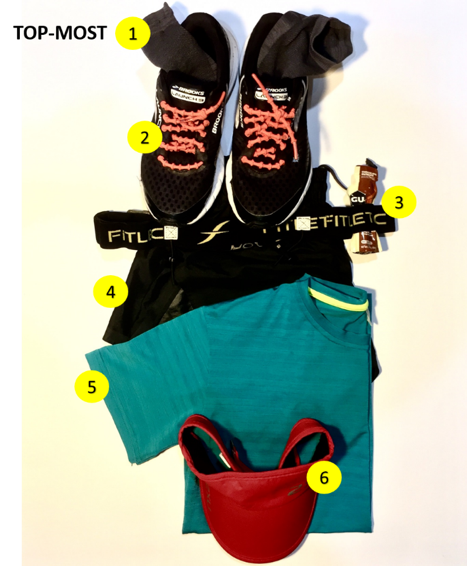
Tip: On top of your pile, place a towel so that you can wipe yourself off. Wipe water and dirt off your feet as you’ll definitely feel the pebbles stuck at the bottom of your feet when you run.
4. Swim Proper
Prepare to be kicked, pulled, and hit during the swim leg. It’s not personal. Aquathlon swim starts are mass starts, meaning everyone in your wave goes all at once. However, there is a way to limit the unnecessary physicality.
First, try to practice swimming for 2-3 strokes with your head above the water during training. Swimming with your head up will help you see your path and help you maneuver without being hit or hitting anyone. If this is hard, you can try doing breaststroke (sans the KICK, please don’t kick anyone).
For the rotation of the swim, you will be changing lanes every lap (i.e. first lap will be swam on lane 1, second lap on lane 2, third lap on lane 3, and so on). To do faster turns, swim near the lane line which you will be switching to when you’re 10-15 meters away from the wall.
Third, always keep safety in mind. Be prepared to do more than one loop for the swim during your race. If you can, practice jumping out of the water to get out. If you’re not used to it yet, better stick to the ladders. As for starting your next loop, you can opt to dive head first or feet first into the pool. For advanced swimmers, head-first dive is optimal. However, if you decide to do feet-first, jump close to the wall so you can push off and maximize the wall.
Here’s a summary of the things to remember during the swim leg:
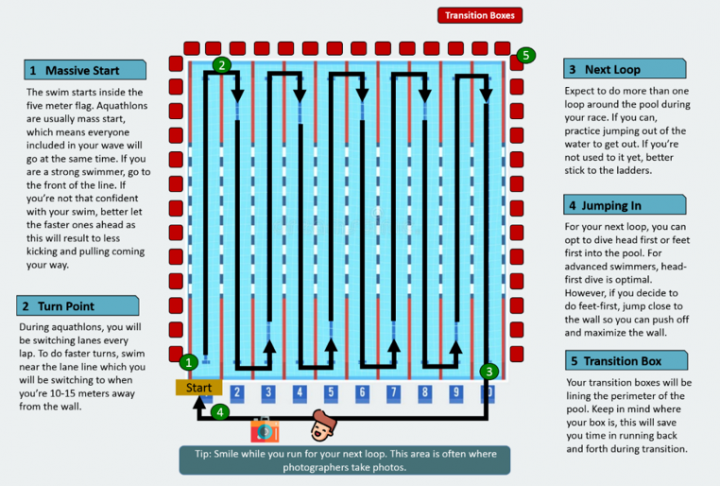
5. Sockless Running
Here’s something for those who are looking for a marginal cut on their PRs. Since aquathlons involve, at most, a 5km run, you may ditch the socks. However, if you are not used to sockless-running, be prepared to have painful blisters after. OUCH!
Here’s how you can prep your shoes for a more comfortable sockless-running:
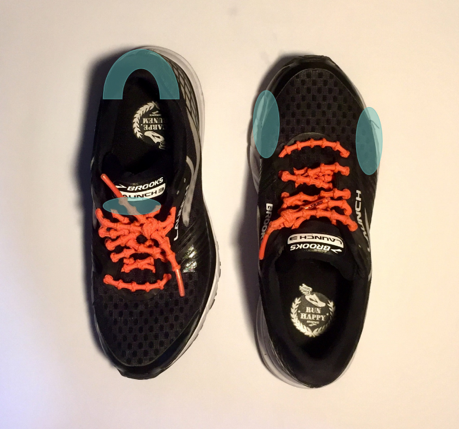
Apply petroleum jelly or anti-chafe cream like ActiveHealth SKINPRO on the shaded areas.
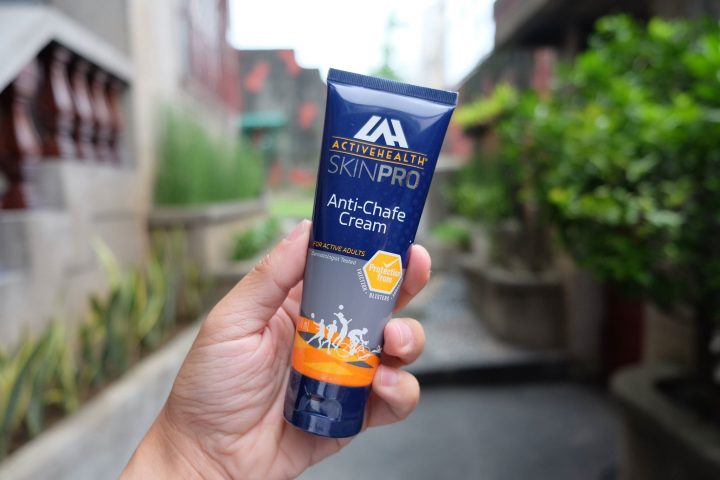
With your shoes, all set, transitioning from swim to run will be a breeze and you’ll be assured of a blister-free finish!
So what are you waiting for, register for that race you’ve been eyeing, log in your training, and with these tips and tricks up your sleeve, you’ll own your race for sure!
Got other aquathlon tips for newbies? Send them over, we’d like to hear about it!






